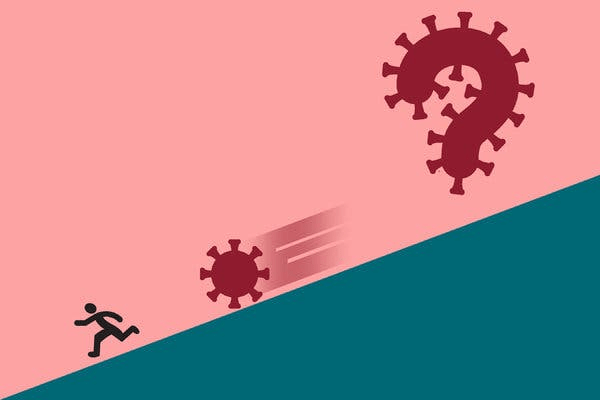
The Digital Doctor is In: AI and Telemedicine Redefine Healthcare
The healthcare industry is undergoing a seismic shift fueled by artificial intelligence (AI) and telemedicine.

The chief information security officer (CISO) is the administrator responsible for a company’s information and data security. Although the role has been rather narrowly interpreted along those lines in the past, today, the title is often stated interchangeably with CSO and VP of security, indicating a more comprehensive role in the organization. Driving security professionals looking to climb the corporate ladder may have a CISO position in their sights. 2021 will see new possibilities in the industry, but new and damaging threats are expected to emerge.
The growth in Malicious Insider Activity
Malicious insider activity develops during times when people are facing difficulties and economic uncertainty. At an occasion, Dr. Jessica Barker, Cyber Security Consultant and specialist in the psychology and sociology of cybersecurity, stated, “We have to recognise the fact that there are circumstances at the time, and looking into the near future that may influence a surge in malicious insider activity.”
AI-related Warnings
As artificial intelligence (AI) and machine learning (ML) play a larger role in developing technology abilities, AI and ML-related threats will likely grow, such as the poisoning of training data collections and model corruption. With ML depending on cloud-based data sets, visibility and security of goings-on outside the established perimeter will be essential.
SASE will converge
Secure Access Service Edge (SASE) architecture will be needed to support a holistic zero-trust implementation, and these terms will be the cornerstone for any future workforce digital transformation, offering full visibility, authority, and enablement for a secure cloud transformation.
Remote Working will continue
Permanent work-from-home will present the final push for many organizations that have so far ignored the increasing irrelevance of perimeter-based security checks. 2021 will witness consensus agreement that security needs to follow the data, and the fortunes of security traders will hinge on their willingness to deliver security and data protection from the point rather than legacy security housed within an appliance.
Network and Security Plans
As more companies consolidate and move away from appliance-based security technology, IT and security departments will understand the cost savings and operational efficiencies the move to the cloud delivers.
Organizations following a cloud transformation framework model such as Secure Access Service Edge could save cost average between 20% and 40% in 2021. As organizations continue to adapt to the cloud, employees are no longer on a corporate network, so the operational investment must move with the data. The established legacy network and security stack become less relevant, while IT and security functions will become closely aligned.
More Attacks on Financial Institutions
Financial services institutions such as banks and other firms that are responsible for the security of consumer financial data must remain vigilant in their cybersecurity efforts throughout 2021. The high value of financial data, including Social Security numbers, banking details, and so on makes it a lucrative target for cybercriminals.
Financial services organisations are not breached as frequently as other industries like healthcare, but when they are breached, these incidents tend to be much larger and more detrimental than those experienced by enterprises in other industries. For instance, even though 7% of breaches in 2019 took place at financial services organisations, 62% of all records leaked in that same year were from financial companies.
COVID-19 accelerates Digital Transformation
If looking at 2020 from a technological point of view, we can discern a silver lining. There were rapid digital transformation efforts across industries organisations strove to comply with stay indoors orders.
Digitalisation has been an ongoing objective for countless organisations since the early 2010s. If stay-indoors orders were never enforced due to the coronavirus outbreak, many organisations would not have been embraced digitalisation yet. 2020 has stimulated 5G to keep remote workers connected. Companies expanded the use of AI and ML-infused analytics to grow their businesses and increased cloud adoption to enable businesses to achieve simplified innovation, faster time-to-market, easier scalability, and more.

The healthcare industry is undergoing a seismic shift fueled by artificial intelligence (AI) and telemedicine.

The healthcare and pharmaceutical sectors are navigating a transformative period, with technological advancements reshaping patient care, operational efficiencies, and strategic growth.

In the world of business, financial wizards wave their wands to conjure profits and success. But behind every great money magician …

Insurtech is not just making waves in the insurance industry—it’s rewriting the rulebook. As technology-driven startups disrupt …